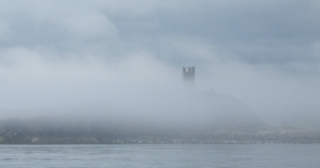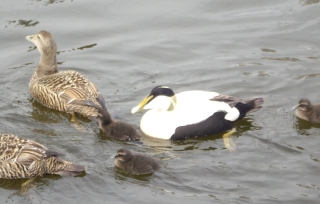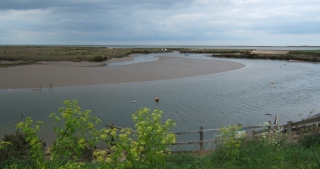When men with boats started to cross oceans they very soon realised that a bigger hazard than the sea itself was coming into contact with land, this being so much harder than water. Thus it became important to know roughly where you were and to be able to navigate safely. Today we can thank such early navigators for the concepts of latitude and longitude, for meridians and rhumb lines and perhaps even for GPS.
Without these navigational concepts the line we crossed on our passage across The Wash would be meaningless. There was nothing to see except a heaving grey sea streaked with foam beneath an angry looking sky. Our own focus was more on the boat's wind speed indicator as we watched the numbers rise when a squall came in, 25 then 30 knots, and as we wrestled with sailcloth trying to give the wind less to grab hold of. Our thoughts were far from the achievements of famous historical navigators and why zero longitude is where it is. Nevertheless there was a moment, a single moment, on our passage from Wells to Hull when Cirrus crossed that line, thus moving from the Eastern to the Western hemisphere of the earth. Now having marked this moment we continue our travels, always west of Greenwich, taking it all for granted.
Wildlife moments
I have commented before in these pages on how, with her tinted acrylic windows, Cirrus Cat is ideally suited to watching wildlife; we can see out quite clearly but from the outside the windows just look black and shiny with no indication of anything beyond.
What I hadn't realised was that this feature could be useful not only for watching animal life intent on its business and venturing close but also for watching human life passing by. From our position in the marina here in Hull we have captured a couple of wildlife snaps, one yesterday evening, a time when these particular creatures come out in all their finery.
And then again this morning we snapped this one.
This picture probably requires some explanation. The men dressed in black are professional divers, dressed from head to foot in thick diving drysuits. They are working on a paved slope above the water using a strimmer to cut grass growing in the cracks which, so far as I am aware, is not a regular piece of diving equipment. The man on the slope also has a hard hat and protective mask and is roped from above by the other drysuit clad figure, anchorman. We thought that this seemed like a rather complex and expensive way to cut grass until we realised the role of the third man. He is not just a bystander, oh no. His role is the most important of all. He is Health & Safety.
So having arrived in Hull, sliding up the brown waters of the River Humber right into the heart of the city, we are spending some time visiting family and meeting with friends as we wait for the weather to decide to give us a nice gentle breeze to take us north again. This gives us the opportunity to explore and find out what makes the city tick and also to discover just how many of the city's many facilities we can experience without actually paying.
One such experience is just behind us in the marina, a wonderful piece of memorabilia in the shape of the Spurn Lightship, all freshly coated in matt black paint. Although some lightships do remain at sea, it is not uncommon to come across these tough vessels withdrawn from service and languishing in ports, usually converted to serve some alternative purpose - maybe a floating restaurant or a residence. Spurn (LV12) is preserved and maintained just as she was so that visitors can come aboard and marvel at the cramped conditions the keepers once enjoyed at sea.
A stint on a lightship would last a month, but poor weather might make it too dangerous to leave which meant that the crew had to stay longer at times. Sadly all our lightship mariners become redundant in the 1970s, going the same way as lighthouse keepers, with automation taking the place of human control. Where lightships were once anchored at sea you may now find a Lanby (Large Automatic Navigation BuoY) bobbing about, serving the same function but minus the romance of course.



























